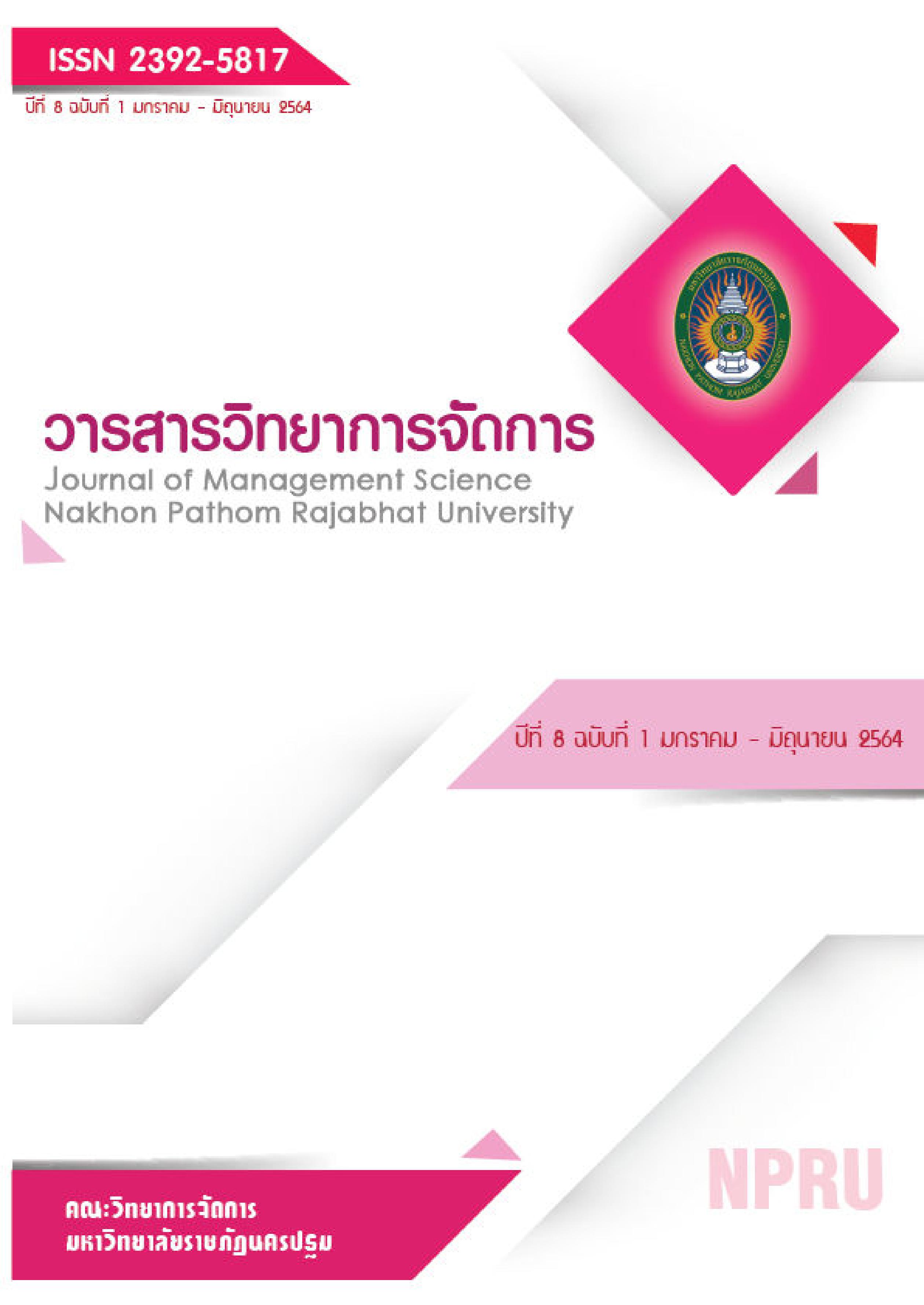Total Quality Management Development (TQM) of Service Division, Infantry Center, Thanarat Barracks
Main Article Content
Abstract
This research aimed to study: (1) to study level total quality management (TQM) of infantry center service division, Thanarat barracks (2) to study of factors for organizational development 7 factors (7s) of infantry center service division, Thanarat barracks and (3) to study of factors for organizational development 7 factors (7s) there is a relationship with the total quality management (TQM) development of infantry center service division, Thanarat barracks. The sample group was selected from the personnel of infantry center service division. The sample comprised of 154 people. Data were treated and analyzed by using descriptive and Inferential Statistics methods, which were percentage, mean, standard deviation and Multiple Regression Analysis.
Findings:
1. Total quality management development of infantry center service division, Thanarat barracks, when considered in each aspect it was found that was at high level in all aspect, are focus on the internal and external personnel, organization management, performance measurement, continuous quality improvement, and personnel participation respectively.
2. Factors of organizational development 7 factors (7s) of infantry center service division, Thanarat barracks as a whole was at high level. When considered in each aspect it was found that was at high level in all aspect, are strategy, skill, format, system, structure, shared values, and personnel respectively.
3. Factors for organizational development 7 factors (7s), includes format and shared values there is a relationship with the total quality management development have statistically significant at the level of 0.001, skill had relationships with statistically significant at the level of 0.05, structure and system have causal relationship statistically significant at the level of 0.05. The equation of the multiple regression analysis is
Ŷ = 0.296* + 0.070x1+ 0.115 x2 *+ 0.135 x3 *+ 0.165 x5 **+ 0.192 x6 **+ 0.185 x7 **
Article history: Received 13 May 2020
Revised 28 June 2020
Accepted 30 June 2020
SIMILARITY INDEX = 1.15 %
Article Details
The views and opinions of the article appearing in this journal are those of the author. It is not considered a view and responsibility of the editorial staff.
References
ณัฏฐพันธ์ เขจรนันทน์ และคณะ. (2550). การจัดการ. กรุงเทพมหานคร : ซีเอ็ดยูเคชัน.
ทิพย์วรรณ จูมแพง, กุหลาบ รัตนสจธรรม และวัลลภ ใจดี. (2555). ปัจจัยที่มีอิทธิพลต่อความสำเร็จในการพัฒนาคุณภาพการบริหารจัดการภาครัฐตามการรับรู้ของบุคลากรในหน่วยงานระดับเขต กระทรวงสาธารณสุข. วารสารสาธารณสุขมหาวิทยาลัยบูรพา. 7(2), 38-52.
พงศ์เพชร ดามาพงศ์. (2552). การบริหารคุณภาพโดยรวมกับการปฏิบัติงานของพนักงานบริษัท AIS. วิทยานิพนธ์บริหารธุรกิจมหาบัณฑิต มหาวิทยาลัยอีสเทิร์นเอเชีย.
ศูนย์การทหารราบ ค่ายธนะรัชต์. (2561). ประวัติ.[ออนไลน์]. ค้นเมื่อ 7 พฤษภาคม พ.ศ. 2562, จาก http://infantry-center.rta.mi.th/home/
Bartol K.M. and Martin D.C. (1991). Management. New York: McGraw – Hill.
Gilbert, G. (1992). Quality Improvement in a Defense Organization. Public Productivity and Management Review, 16 (1), 65-75.
Green, S.B. (1991). How Many Subjects Dose It Take to Do a Regression Analysis? Multivariate Behavioral Research, 26 (3), 499-510.
McKinsey, R.A. (1972). The Time Trap. New York: Amacom.


